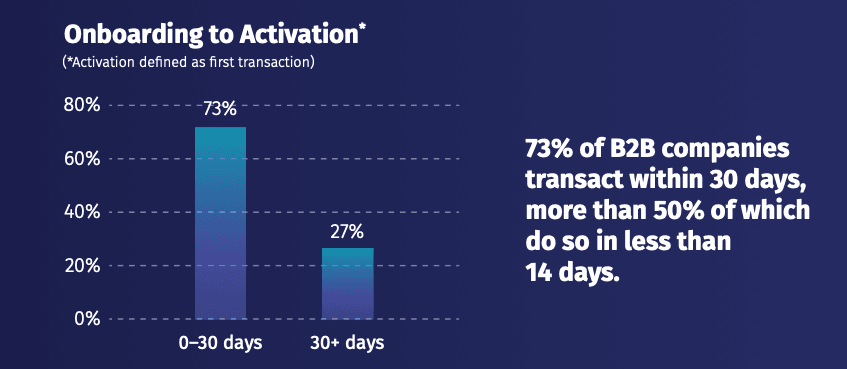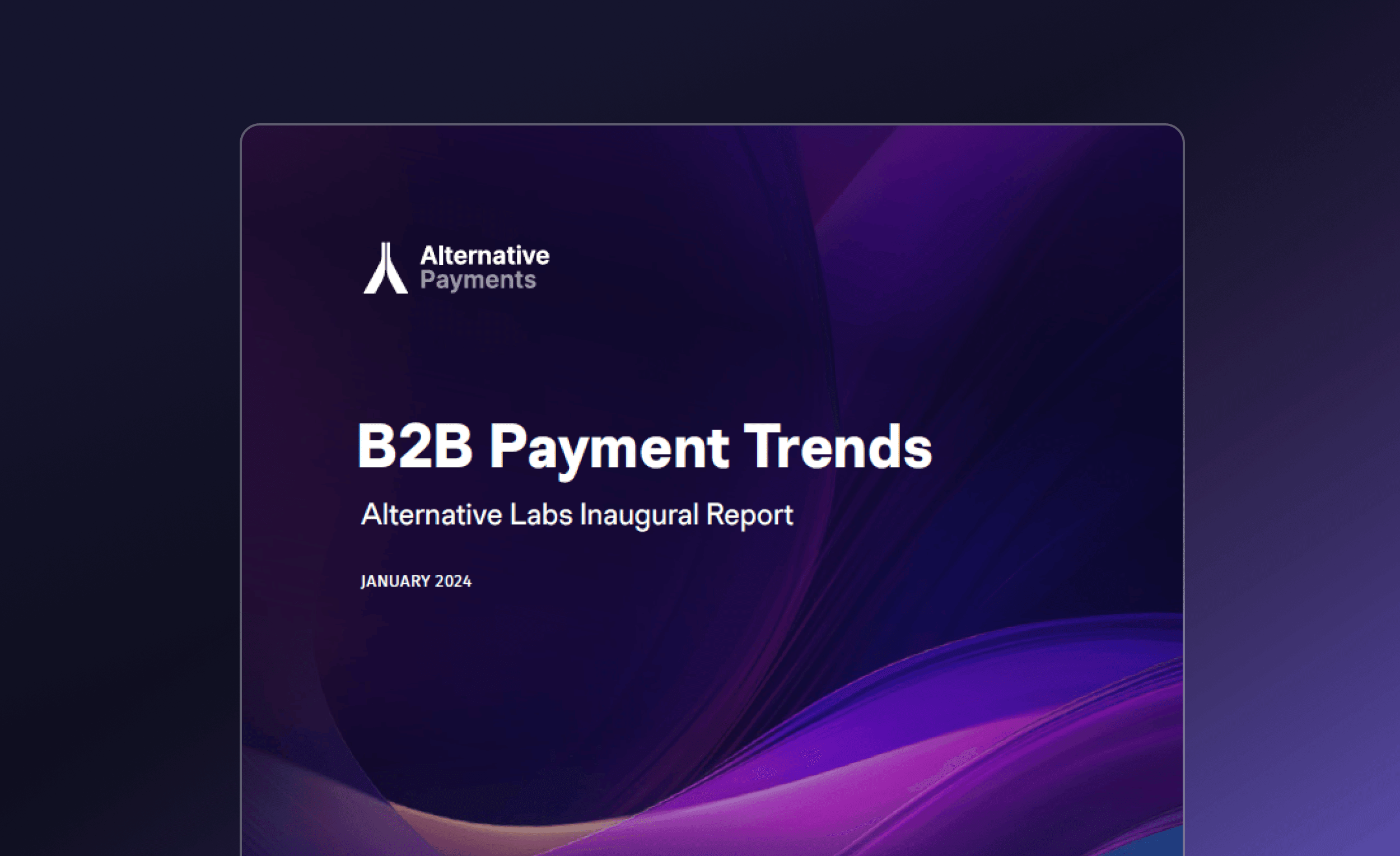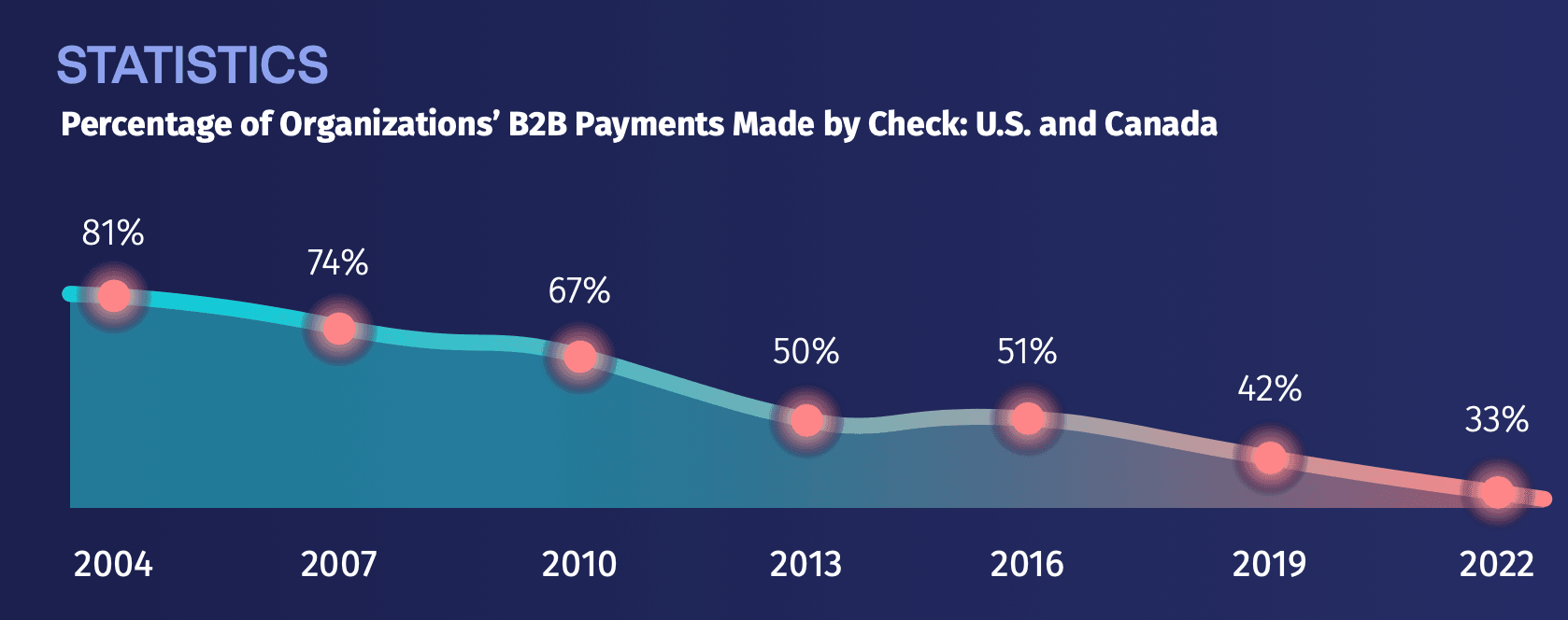Payments have overwhelmingly moved to a digital format. From the consumer perspective, fewer and fewer people are paying with cash, instead opting to make purchases with cards and leaning into mobile wallet methods like Apple Pay.
When reviewing business payments, while not as quick to adapt new payment methods as consumers, the amount of B2B payments going digital is surging. Online payments represent 67% of total B2B payment volume (up from 33% in 2010) and are projected to comprise 75% of total payment volume by 2025 (JP Morgan, 2022). It’s clear the rapid adoption of online payment processing is reshaping the B2B landscape.
What does this reshaping look like and how are online payments impacting the overall B2B payment landscape?
What are B2B online payments?
B2B online payments are essential for modern business transactions, as they facilitate the secure transfer of funds between companies paying for goods and services and companies providing them. Leveraging payment gateways, businesses can securely transfer funds via various channels: wire transfer, ACH transfer, real-time payments and integrate transactions seamlessly with accounting systems for efficient financial management. These systems prioritize security through encryption and fraud prevention measures while accommodating international transactions and currency conversions. By embracing B2B online payments, businesses streamline operations, strengthen partnerships, and enhance financial workflows in today’s digital economy.
Why now?
It’s safe to say that B2B online payment growth has been fast. According to JP Morgan 2022 Digital Payments Survey, in 2019 only 50% of businesses used online payments for B2B transactions. Just three years later, in 2022 70% of businesses used online payments. This is an over 20% surge.

It’s simple: the companies that are prioritizing online payments are seeing great gains almost immediately….and those that have yet to make the switch to online payments are leaving money on the table, and wasting valuable time. However, it’s never too late to get started.
There are few factors that are pushing this adoption. They include:
- Online payments offer significant benefits to streamline operations.
- Implementing online payments is now quick and seamless compared to traditional methods
- Customers prefer to pay online…accepting only check payments is outdated
Implementing online payment processing is quick and seamless
For the longest time, check payments made up the bulk of B2B transactions. To get started it required the constant back and forth to collect banking information, manual input of invoices, and issuing of invoices. This was not only timely, but also susceptible to human error, and nearly impossible to track. Between collecting the right billing information, issuing an invoice, and receiving the payment, the B2B payments process could take weeks.
With online payments, it has never been easier to get set up and running. 73% of businesses onboard and activate in under 28 days, while 31% do so in under a week, according to Alternative Payments proprietary data. The emergence of comprehensive APIs and embedded finance have simplified the integration and implementation of online payment solutions.

Paying online is more streamlined than ever
Traditional B2B payment processes have long been clunky, and largely untrackable, which is problematic when dealing with large transactions. The ability to pay online has not only streamlined the payment process, but also unified the entirety of the transaction journey from accounts receivable to billing to payments to security, while providing visibility.
One of the biggest concerns with the clunky nature of B2B payments is that of security and fraud. Check fraud has doubled since 2021, further incentivizing the switch to online payment methods. Online payment solutions have evolved with robust security measures and compliance, addressing concerns about data breaches and regulatory requirements, whereas traditional B2B payment processes don’t necessarily have this capability.
Customers prefer to pay online: B2B check payments are outdated
The option to pay with an online payment method is not only beneficial for you as a business, but overwhelmingly more and more of your customers prefer to pay online. Online methods are faster, more efficient and in many cases cheaper for both business and consumer – especially when using a payment partner to facilitate this.
When using an online payment processing partner, customer activation of online payment increased significantly over time due to convenience, efficiency and payment offering. B2B payments companies offer diverse options like ACH, credit cards, and financing in addition to traditional methods like cash, checks, and wires.
For businesses that leverage Alternative Payments for their online B2B payment processing, online payments make up 35% of their total revenue in their first month, and by the ninth month this grows to making up over 76% of total revenue.

Should I start processing online B2B payments?
For organizations that have long managed their B2B payments via check payments and manual workflows, updating your process to accommodate online payments can have significant benefits. There is no better time to get started than now. The question lies in how to get started and where to begin.
To better understand if you should start processing online B2B payments, it’s important to consider the following points:
- Evaluate using an online payment processing partner to expand your offering, including payment capabilities and payment methods
- Better understand how your business must streamline payments and accounts receivable, and the opportunity to replace manual processes with automation
- Leverage existing integrations like Quickbooks, Xero, ConnectWise and more to connect your tools and integrate your entire online payments experience
The demand for online payment processing B2B is only going to continue to grow, it’s up to you to decide how to prioritize this market movement. Luckily, you don’t have to do this alone.
Alternative Payments is helping fast growing businesses to streamline and modernize their B2B online payment processing. Customers like 5K Technical Services saw 60% of their check payments converted to online payments within 60 days accepting online payments. Learn more about the Alternative Payments platform and the value of unlocking online payments for your business.
To learn more about the impact of online payments on the overall B2B payments landscape, be sure to download Alternative Payments’ latest report B2B Payment Trends in 2024.



